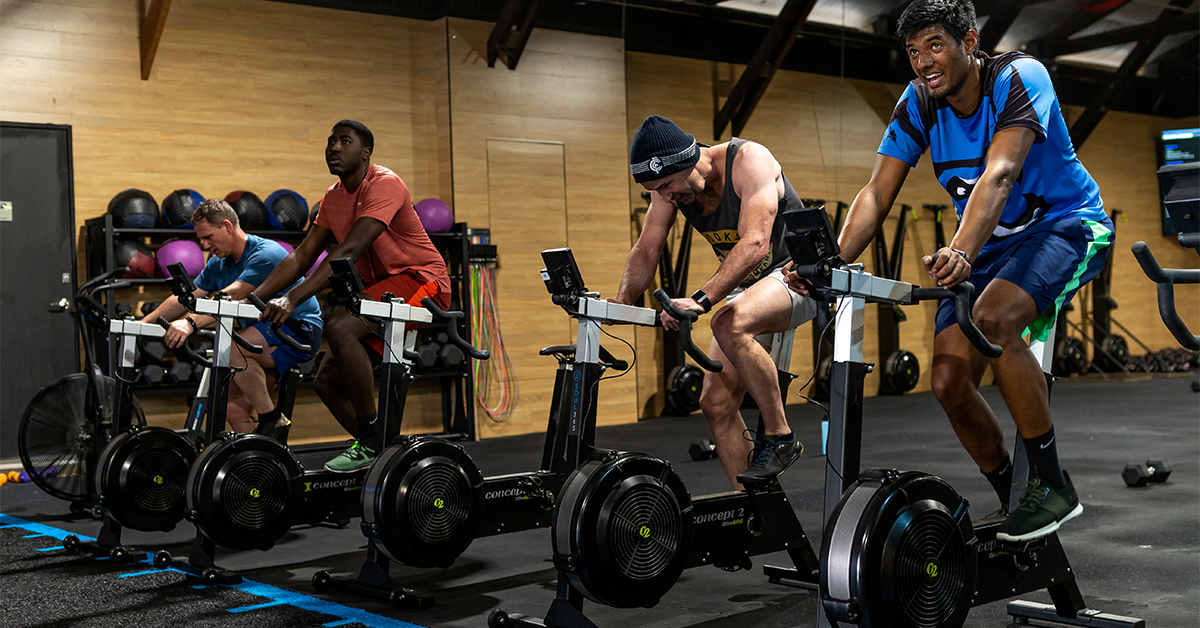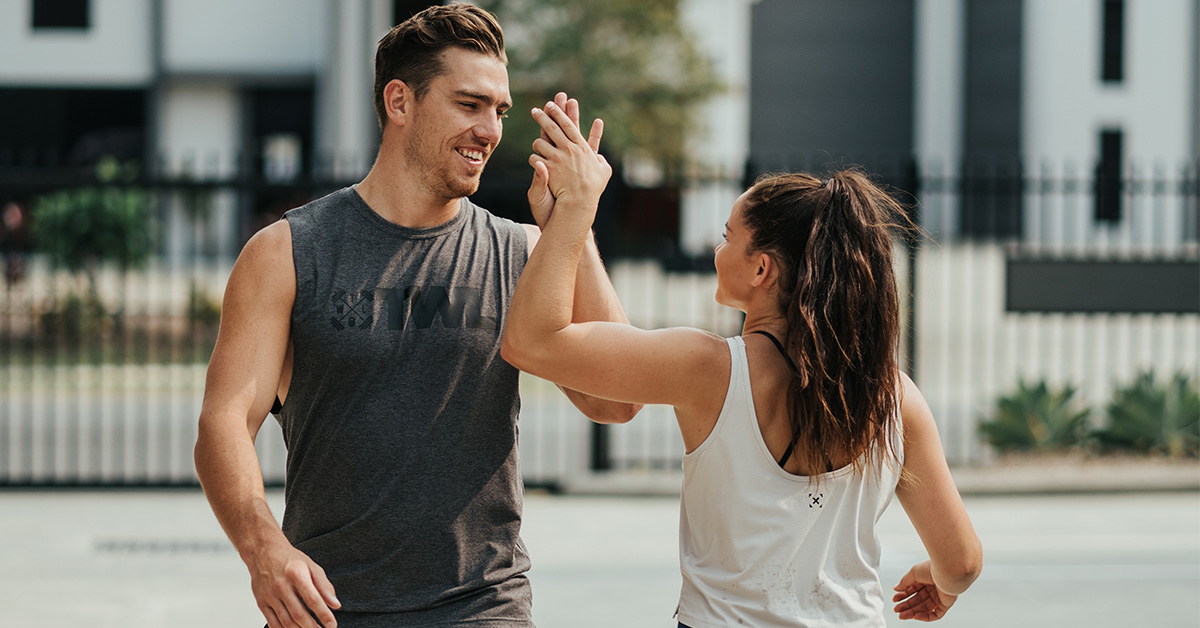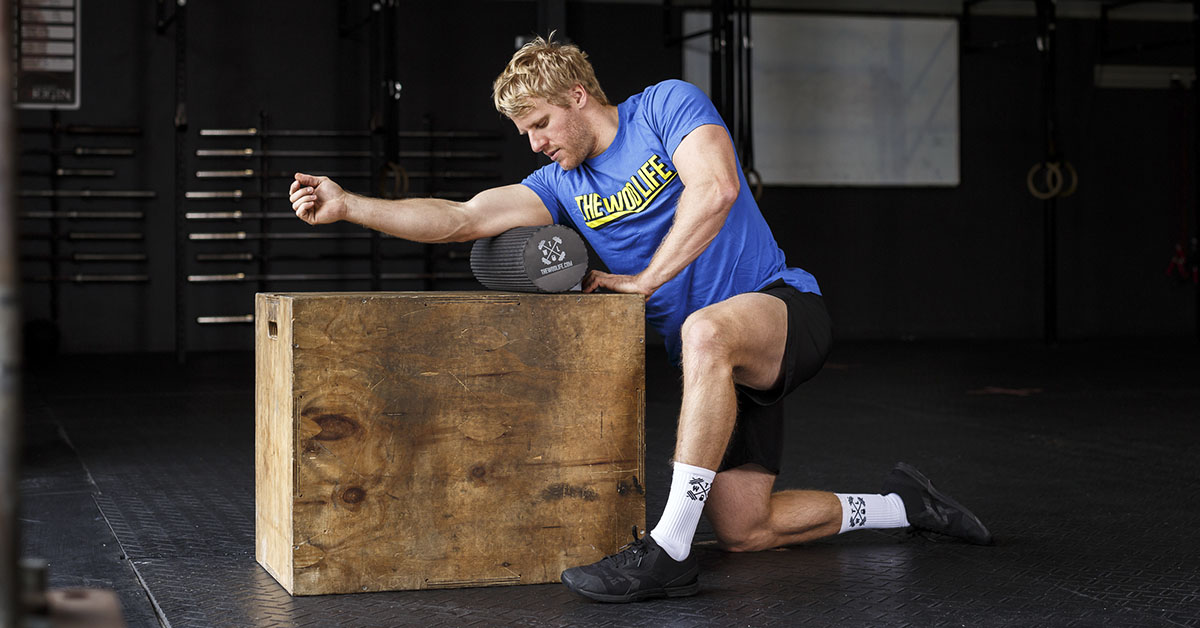Week 1 of the 2022 Open is underwar. You’ve probably already realized that you’re going to push your body to the limit and experience things you never have before — especially if this is your first Open. Recovery is paramount to your success. So, let’s talk about how you can ace it so that you can give each workout your all.
5 Recovery Tips to Help You Get Through the Open
1. Choose Your Repeats Wisely
We’re putting this first because it could have a serious impact on how well you’re able to perform during the Open.
We know that it can be tempting to repeat the Open workouts. Now that you know what to expect, you can come up with a better strategy. And certainly, in some cases, repeating a workout makes total sense. Were you having a horribly off day? Did you not feel well? Did something drastically inhibit your performance that’s no longer an issue? In any of these cases, you might be safe to repeat.
But here’s the thing.
If you’re doing it merely to squeeze out a few more reps or shave off a few seconds, you might want to reconsider. For the vast majority of us, the best thing we can do is use that valuable time to recover and get ready for the next workout.
Open workouts are so very demanding. They destroy your grip, tax your quads, kill your shoulders. Repeating an Open workout means putting that much more stress on your system, and taking that much longer to recover. And when the next week’s workout rolls around, you’re still feeling like you were hit by a truck.
One of the best recovery tips that we can give you is to think really hard about whether or not a redo is worth it.
2. Adjust the Rest of Your Training Accordingly
There’s a chance that your coach is going to handle this for you, if you’re training at a box where they’re managing your programming. But we’d like to give you a little rundown anyway.
Open workouts are notorious for being far more intense than what you would normally be doing at the gym. And for this reason, it’s logical to ease up on your training outside of the Open workouts just a little bit. This will give your body a better chance to recover.
You should also consider tweaking your programming so that you’re not taxing the same body parts all week that you did during the last Open workout. For instance, if that week’s workout had you repping out butterfly pull-ups like there’s no tomorrow — and, as a result, your grip is shattered — the rest of the week at the gym, you should consider movements and WODs that aren’t grip-intensive.

Same thing if you’re experiencing extreme soreness in your quads, shoulders, back, etc.
3. Train Mobility Like You Mean It
Another recovery tip that will help you get through the Open? We have one word for you: Mobility.
Mobility is always important, and it’s also one of the best things you can do to prevent injury.
Shop Now
Here’s why it’s even more important during the Open.
You’re going to be more sore than normal. The DOMS is real. And you probably already know that when you get sore, everything tightens up. Your muscles won’t move in ways that they normally would. Maybe on top of this, you’re sitting at a desk all day for work, and then you go to the gym to get your sweat sesh in.
And this is where injury happens.
This is always a risk. During the Open, it’s multiplied by 100. So, mobility matters — big time.
Prioritizing mobility will help you accomplish a few things:
- It’ll take the edge off your soreness.
- You’ll recover faster, in time for the next Open workout.
- You’ll be able to perform the movements you need to more safely, easily, and effectively.
- You will reduce the risk of injury during the Open.
We will always encourage you to mobilize, and for the Open, you should be that much more strategic and intentional about it. If a ton of overhead movements are on the menu, pay extra special attention to mobilizing your shoulders. If there are tons of squats involved, give your hips some love. Spend more time on a foam roller. Get into those sticky spots with a lacrosse ball. Loosen up tight tissue with a muscle roller.
And by the way, you can mobilize even if you don’t have any equipment!
4. Follow Your Normal Routine
We know this might contradict some of our previous recovery tips, but let us explain.
When the Open rolls around, a lot of athletes attempt to do a 180 and completely overhaul their lifestyle. We’re talking a flawless diet (whatever that might mean) and a rigorous training schedule.
Here’s the problem with that.
The last thing you want to do just before and during a competition is change everything that your body is used to.
We understand the motivation here. You want to put forth your best performance, so you’re on your best behavior. The thing, though, is that any changes would have needed to be made months before the Open ever started, at least. Changing your habits at the 11th hour really isn’t going to do much…
… except completely throw your body off.
If you’re used to eating a big bowl of oatmeal in the morning, you should probably stick to it. Don’t suddenly switch to only egg whites because you’re trying to get extra protein in. If you’re used to sleeping in until 10:00 a.m., don’t suddenly start waking up at 8:00 a.m. to make more time for Open prep.
5. Listen to Your Body
It might sound simple, but we can’t stress the importance of this.
The last recovery tip for the Open that we want to leave you with is this: If your body is telling you to do something, or not do it, then it’s for a reason. Listen!
Maybe you’re used to hitting the gym five times a week, but one of the Open workouts left you absolutely gassed. Is your body screaming for a day of active recovery as opposed to a regular WOD? Listen.
Perhaps a workout was particularly grueling, and while you don’t normally eat before bed, your belly is grumbling for a tiny snack. Listen.
Maybe you were going to attempt ring muscle-ups in a workout, but your shoulders are hinting that they have another plan in mind. Listen.
Our bodies are incredible machines, and they understand more than we give them credit for. If your body is begging for something, respect it.
The Open workouts are big. What you do in between them is possibly even bigger. Give these recovery tips a try this year, and we’re certain you’ll see progress.
With the Open here, make sure you’re mentally prepared for the workout each week!

















